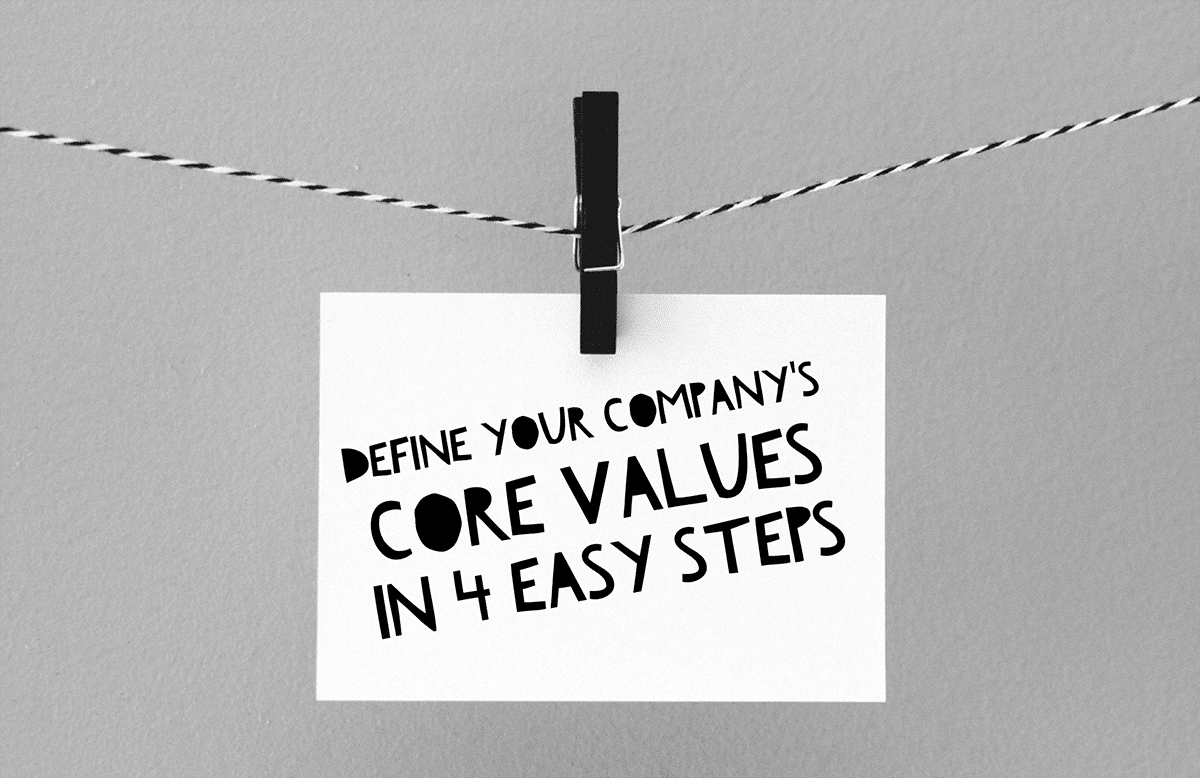
What do you strive for in your day-to-day life? Honesty? Authenticity? Success? Security? Or something else? You might not know the answer offhand, but on some fundamental level, these ideas or ones like them factor into every major decision you make. They’re your core values, and they guide you. Consciously or not, successfully or otherwise, you live your life according to what you believe is most important — what you value most.
Your company also has core values. Whether you’ve defined them or not, that’s already true. You don’t need the help of consultants, speakers or exercises to create core values for your business, because they’re already embedded in your operations and culture. If there’s help to be had, it’s in discovering and defining those values, and better aligning your business practices to them.
So if personal values include things like security, success, honesty, relationships and clean living, what do organizational values look like? Well, they aren’t all that different. Here are a few examples:
- Fair, mutually-beneficial dealing with vendors and providers.
- Putting your customers’ happiness first.
- Treating your employees, guides and agents like family.
- Leaving the natural world better than you found it.
- Cooperating with local stakeholders.
In other words, honesty, selflessness, relationships, sustainability, and community — all values that could easily belong to an individual, too.
There’s a reason for that synchronicity: corporate values are based on personal values. But where our personal values form individually by way of our experiences and observations, organizational values are developed communally, with input from everyone involved in any sort of decision making or customer interaction.
That’s why it’s so important to define them.
Step One: Choose Your Contributors
When it comes to values, you don’t want to start small. Better to identify too many than too few, because the ones you miss may be important to the functioning of your company.
Depending on the size of your company, there are a few ways to manage this brainstorming phase:
Just the owners: In a small company without many employees, a top-down approach may be most practical. The owner or owners can consider what matters most to them and guide their ongoing operations based on those values.
Everyone at the company: Larger companies or small businesses with long-standing, loyal staff members may be better served to open the process to everyone. The final definitions still belong to the owners, but everyone can contribute their own ideas and observations about the company’s identity. This can give you a broader view that includes front-line perspectives you might otherwise miss.
Everyone everywhere: For a truly comprehensive view of your company’s values, you can also reach out to key stakeholders. Vendors with whom you have a close working relationship. Family members who’ve seen your company from the outside. Loyal customers. Members of the local community. This approach can be eye-opening, but it also takes a lot of trust.
Step Two: Brainstorm
Start gathering values from your contributors. Use whatever method is easiest for everyone involved, whether that’s email, note cards, a communal white-board, or anything else.
Opening the brainstorming process up to a lot of people can be rewarding, but it can also lead to confusion. Rather than asking your staff or stakeholders for organizational values, ask them questions that will help you identify the values:
- What makes you the proudest to work here?
- Why did you choose to work with us?
- What do you think our greatest strengths are?
- Why do our customers trust us?
A customer survey can also help identify your organizational values. Identify a number of potential values, then ask customers to rank how strongly they identify your company with those values on a 1-10 scale. Consider software like SurveyMonkey to make the collection process easier.
Need some ideas of values you can begin with? This list of 500 basic examples from Threads can be a great help.
Step Three: Pick the Winners
At the end of the brainstorming process, you’re going to have a lot of values, not all of which will be perfect fits. Don’t throw anything out quite yet, though.
First, take the answers you’ve received and organize them. Use whatever organizational method works best for you, like note cards, mind maps, spreadsheets or lists. All that matters is that you can get them into loose groupings of similar values. For example, diversity, respect for others, employee satisfaction and family atmosphere all relate to your company’s approach to people and group well together. Duplicates are good, too — they tell you which values are most associated with your company, which is vitally important information.
Once that’s done, take a look at the results. Now you can start to eliminate the extreme outliers. If one contributor out of fifty says that “toughness” is a strength for your company and nothing else groups with it, it’s probably not all that core a value. But if half your contributors include some variation of fairness, honesty, fidelity, trustworthiness and so on, something in there is more likely to be core to your business.
This can be a challenging process, because the values you identify may not always line up with what you expect. If, say, community is a core value of yours but no one recognizes it — or anything like it — as a strength or factor in your business, you may be tempted to discredit the results. Similarly, if you dislike some of the results, you might not want to accept them.
Instead, take the answers as they come. If you identify core values that clash with your vision, that says that your business practices are emphasizing the wrong things, and that’s information you can work with. And if core values of yours are missing from the big picture, that tells you more work in those areas is required before they can become organizational values, too.
When you finish going through this process, you should be able to identify a handful of core values that are a) commonly held by your employees, partners or stakeholders and b) fit your vision for your business. Those are where to spend your attention.
Step Four: Define the Final Values
With your chosen values in hand, write up short, memorable points for each. These aren’t mission statements, which should say a lot more about what your company actually does. These simply lay out your values.
Here are a few examples:
- Serve the community.
- Benefit our planet.
- Have the highest standards.
- Respect everyone’s differences.
- Sell, sell, sell.
- Share our passion for our product.
Keep them short and sweet, and focus on just a few. No more than five. The more you name, the more likely they are to conflict with each other.
These are core values, after all, and they’ll underlie every decision you and your employees make.
Have you defined your company’s core values? For more on aligning your business practices with your values, check out our article on embedding sustainability into your company’s culture.
Search The Blog
Categories
Most Popular Articles
- 16 Innovative Tourism Business Ideas and Trends for 2025
- Time to Reflect: A Tour Business Review Can Set You Up for a Year of Success
- How Tour Operators Can Protect Themselves Through 2023’s Flu Season
- Get More Bookings With These 9 Tourism Website Essentials
- How to Create a Business Plan for Your Tour or Travel Company








